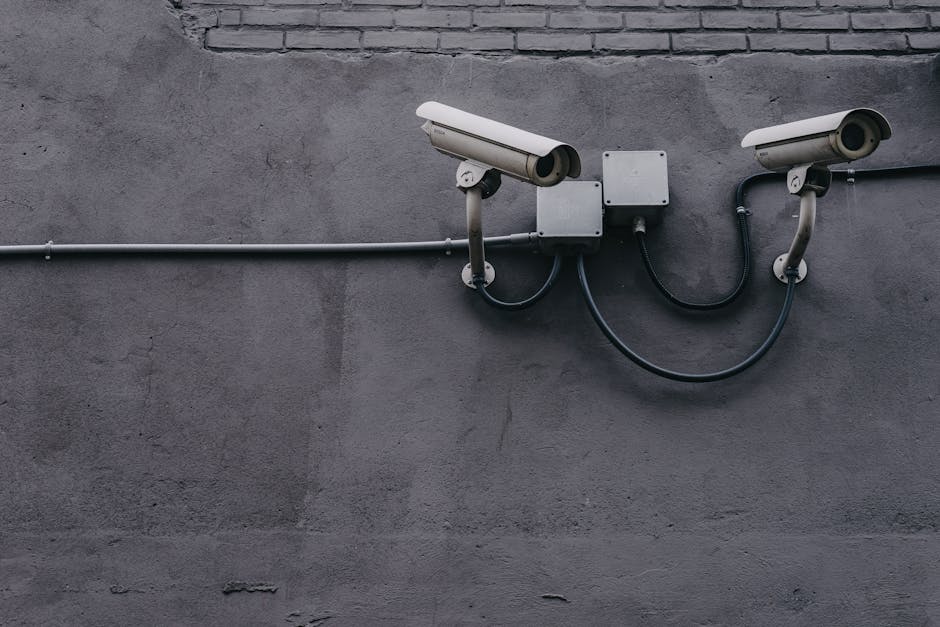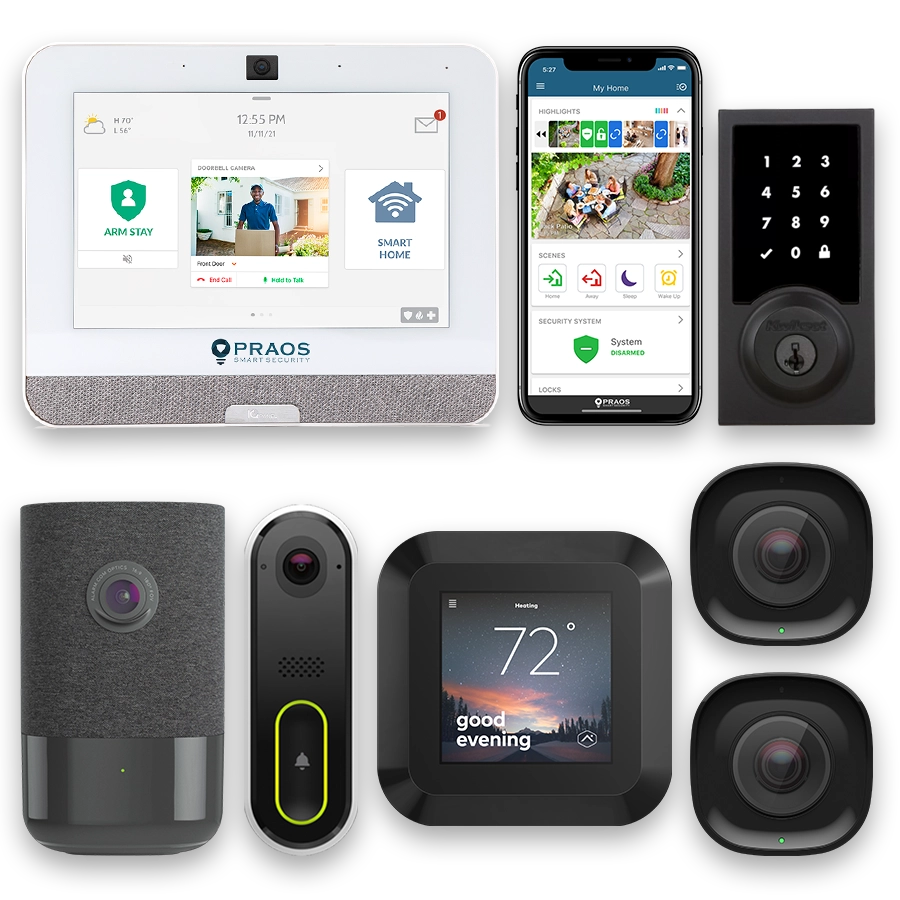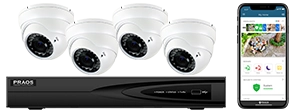- Introduction to Wireless Camera Technology and Home Security Systems
- Integration of Wireless Cameras into Existing Security Infrastructure
- Technological Advancements and Features of Modern Wireless Cameras
- Installation and Deployment Best Practices
- Data Security and Privacy Considerations
- Future Trends and Innovations in Wireless Camera Technology
Introduction to Wireless Camera Technology and Home Security Systems
Home security systems have seen significant advancements over the years, with one of the most notable being the integration of wireless camera technology. Wireless cameras are increasingly becoming a preferred option for homeowners due to the flexibility, ease of installation, and enhanced capabilities they offer compared to traditional wired systems. This technology leverages wireless communication protocols such as Wi-Fi, Zigbee, and Bluetooth to transmit video and audio signals, providing both real-time monitoring and recorded footage.
The primary advantage of wireless cameras lies in their ease of installation. Unlike their wired counterparts, wireless cameras do not require complex wiring and extensive physical integration into the home’s infrastructure. This makes them particularly suitable for retrofitting into existing homes without the need for extensive renovations or adjustments. Additionally, wireless cameras can be easily relocated to different parts of the home as needed, offering greater flexibility in updating and optimizing the security setup.
Wireless cameras are typically part of a broader smart home ecosystem, often integrating seamlessly with other smart devices and security apparatuses. This integration allows for a more comprehensive and responsive security system. For instance, many wireless cameras can interface with smart locks, motion sensors, and alarm systems to provide a coordinated response to potential security breaches. They can also be controlled and monitored remotely via smartphone apps, allowing homeowners to check the status of their home security from virtually anywhere in the world.
The advent of wireless camera technology has been propelled by advancements in several key areas, including power management, which has enabled longer battery life and solar-powered options. This reduces maintenance requirements and increases the reliability of the systems. Additionally, improvements in video compression algorithms and transmission protocols have led to higher-quality video feeds with lower latency, ensuring that users receive clear and timely information.
One of the significant features of modern wireless cameras is the integration of cloud storage options. Instead of storing video footage locally on a hard drive, which can be susceptible to damage or theft, footage can be securely uploaded and stored on cloud servers. This allows for easier access, greater redundancy, and enhanced security of the stored data.
Moreover, advancements in artificial intelligence (AI) and machine learning have enabled sophisticated features such as facial recognition, object detection, and behavior analysis. These capabilities allow wireless cameras to automatically identify and alert homeowners to suspicious activities, reducing the incidence of false alarms and improving the overall effectiveness of the security system.
In summary, wireless camera technology represents a major leap forward in the realm of home security, offering enhanced functionality, ease of use, and greater integration into modern smart home systems. These advancements continue to provide homeowners with the tools necessary to protect their properties and families with greater efficiency and reliability.
Integration of Wireless Cameras into Existing Security Infrastructure
The integration of wireless cameras into existing home security infrastructure presents both opportunities and challenges. Understanding how to effectively incorporate these devices can enhance the overall security posture of a home.
2.1 Compatibility with Existing Systems
Wireless cameras are designed to be compatible with a wide range of security systems. Many modern home security systems offer support for wireless cameras, enabling users to seamlessly integrate these devices into their existing setups.
Before integration, it’s crucial to verify that the wireless cameras in question are compatible with the current system. This involves checking specifications, software support, and connection protocols. Many manufacturers provide lists of compatible devices and offer guidelines for integration.
2.2 Connection Methods
Wireless cameras typically connect to the home security system via Wi-Fi or other wireless protocols like Z-Wave or Zigbee. Each connection method has its own advantages and considerations.
- Wi-Fi: Most common and easiest to set up. Requires a strong, stable Wi-Fi signal to ensure reliability.
- Z-Wave/Zigbee: Low-power wireless protocols that may offer more robust, interference-free connections but require compatible hubs or controllers.
It’s important to choose a connection method that aligns with the home’s existing network infrastructure and the specific needs of the security system.
2.3 Integration Software
Effectively integrating wireless cameras often requires appropriate software. Many camera manufacturers provide proprietary apps or software that facilitate integration. Additionally, third party software platforms can offer enhanced features and broader compatibility.
For homeowners using smart home ecosystems such as Apple HomeKit, Google Nest, or Amazon Alexa, ensuring that the cameras are compatible with the chosen ecosystem can streamline the integration and enhance overall functionality. This can include features like voice control, automated routines, and centralized monitoring through a single app.
2.4 Synchronization with Other Security Devices
Integrating wireless cameras into a home security system isn’t just about connectivity; it’s also about synchronization with other security components such as motion detectors, alarms, and door/window sensors. Effective integration allows for a more comprehensive and cohesive security system.
For instance, if a motion detector is triggered, the system can be programmed to start recording video from nearby wireless cameras. This ensures that critical events are captured, enhancing situational awareness and providing valuable evidence in case of incidents.
2.5 Power and Placement Considerations
A key aspect of integrating wireless cameras involves power sources and strategic placement. Wireless cameras can be battery-operated or require a power outlet. Battery-operated models provide more flexibility in placement but may require regular battery changes or recharges.
Placement of wireless cameras is crucial for optimal coverage. Cameras should be positioned to cover key areas such as entrances, driveways, and other vulnerable points. Ensuring that cameras are within range of the wireless network or signal repeater will maintain connection integrity.
2.6 Monitoring and Maintenance
Once integrated, ongoing monitoring and maintenance of wireless cameras are essential to ensure they function reliably. Regular software updates should be applied to address security vulnerabilities and enhance functionality. Periodic checks and maintenance can prevent issues from going undetected and ensure continuous protection.
Ensuring that the network used by wireless cameras is secure, with updated passwords and encryption, will help protect the cameras from unauthorized access and potential cyber threats.
In summary, integrating wireless cameras into existing home security systems requires careful planning and execution. By considering compatibility, connection methods, integration software, synchronization, power sources, and maintenance practices, homeowners can develop a cohesive and robust security system that leverages the advantages of wireless camera technology.
Technological Advancements and Features of Modern Wireless Cameras
Modern wireless cameras have evolved significantly over the past few years, incorporating a slew of technological advancements and innovative features that enhance their functionality and reliability in home security systems.
High-Resolution Imaging
One of the primary advancements is the improvement in camera resolution. Current wireless cameras offer high-definition (HD) and ultra-high-definition (UHD) resolutions, such as 1080p and 4K, respectively. Higher resolution provides clearer and more detailed images, which are critical for identifying intruders or analyzing suspicious activities. The increased pixel density allows for better zoom capabilities without significant loss in image quality.
Night Vision Capabilities
Another significant feature is the enhancement in night vision technology. Modern wireless cameras often come equipped with infrared (IR) LEDs or advanced low-light sensors that enable clear recording even in complete darkness. These advancements ensure continuous surveillance regardless of the lighting conditions.
Artificial Intelligence and Machine Learning
Artificial intelligence (AI) and machine learning (ML) algorithms are increasingly being integrated into wireless cameras. These technologies enable advanced functionalities such as motion detection, facial recognition, and object tracking. AI-powered cameras can differentiate between humans, animals, and other objects, reducing the incidence of false alarms.
- Motion Detection: Automatically alerts homeowners when movement is detected.
- Facial Recognition: Identifies known individuals and alerts when strangers appear.
- Object Tracking: Follows moving objects to provide comprehensive footage.
Wireless Connectivity
Advancements in wireless technology, such as the transition from Wi-Fi 4 (802.11n) to Wi-Fi 5 (802.11ac) and Wi-Fi 6 (802.11ax), have been instrumental in improving the connectivity and reliability of wireless cameras. These newer standards offer faster data transfer rates, reduced latency, and enhanced range, making them well-suited for high-definition video streaming and real-time alerts.
Battery Life and Energy Efficiency
Improvements in battery technology have extended the operational life of battery-powered wireless cameras. Some models now offer battery life spanning several months on a single charge. Additionally, energy-efficient designs help conserve power, reducing the frequency of recharges and maintenance.
Integration with Smart Home Ecosystem
Modern wireless cameras are often designed to integrate seamlessly with other smart home devices. Compatibility with virtual assistants like Amazon Alexa, Google Assistant, and Apple HomeKit allows for voice control and easy integration into broader smart home systems. This connectivity facilitates centralized control and monitoring through unified platforms.
The following table highlights some of the key features of modern wireless cameras and their benefits:
| Feature | Benefit |
|---|---|
| High-Resolution Imaging (1080p/4K) | Sharper and more detailed video footage |
| Improved Night Vision | Clear visibility in low-light conditions |
| AI and Machine Learning | Enhanced motion detection, facial recognition, and object tracking |
| Advanced Wireless Connectivity (Wi-Fi 5/6) | Faster and more reliable data transmission |
| Extended Battery Life | Longer operational periods with reduced maintenance |
| Smart Home Integration | Unified control and monitoring with other smart devices |
In conclusion, the continual technological advancements in wireless camera technology have significantly bolstered their utility and effectiveness within comprehensive home security systems. These improvements ensure that homeowners have access to reliable, high-quality surveillance to protect their properties and loved ones.
Installation and Deployment Best Practices
When considering the incorporation of wireless camera technology into home security systems, proper installation and deployment are crucial to ensuring optimal performance and reliability. To achieve the best results, it is essential to follow a series of best practices that facilitate seamless integration and operation. This chapter will provide valuable insights and guidelines for effective installation and deployment of wireless cameras, leveraging the experience and expertise of industry leaders like Praos.
Site Assessment and Planning
The first step is to conduct a comprehensive site assessment. This involves evaluating the layout of the property, identifying high-risk areas, and determining the optimal locations for camera placement. Praos offers personalized consultations to help homeowners identify strategic surveillance points that offer maximum coverage and security. Proper planning at this stage helps avoid blind spots and ensures that no critical areas are overlooked.
Choosing the Right Equipment
It is crucial to select wireless camera equipment that meets specific security needs. Factors to consider include resolution quality, night vision capabilities, motion detection, and, weather resistance. Praos provides new customers with free equipment that is both state-of-the-art and tailored to individual security requirements, ensuring reliable performance in diverse conditions.
Professional Installation
While DIY installation can be an attractive option, professional installation offers several advantages. Praos’ award-winning service includes free installation with their monitored new system plan, ensuring that cameras are correctly positioned, connected, and configured. Professional installers also ensure that the system is integrated smoothly with other home automation and security devices via a single connected app.
Network Configuration
Wireless cameras require a stable Wi-Fi connection to operate effectively. This involves setting up a robust home network with adequate bandwidth to support multiple devices. It is advisable to segregate the security devices on a separate network to enhance performance and security. Praos’ team assists in configuring the network settings to optimize connectivity and prevent interference.
Regular Maintenance and Updates
Maintaining the functionality and security of wireless cameras requires regular checks and software updates. This can involve cleaning camera lenses, ensuring all devices are properly powered, and updating firmware to patch potential vulnerabilities. Praos offers ongoing support and maintenance services to keep client systems in top condition.
User Training
After installation, it is essential for homeowners to understand how to operate and manage their wireless camera system effectively. Praos provides comprehensive user training to ensure that clients are comfortable using the connected app for monitoring and automating their home security. This training helps users respond efficiently to alerts and manage their systems proactively.
By following these best practices, homeowners can maximize the benefits of wireless camera technology within their home security systems. With Praos’ professional expertise and commitment to safety, users can ensure that their installations are performed to the highest standards, providing peace of mind and enhanced protection.
Data Security and Privacy Considerations
When considering the implementation of wireless camera technology within home security systems, it is imperative to address data security and privacy considerations. Ensuring that both are managed effectively can safeguard against potential vulnerabilities and maintain the integrity of the system.
Wireless cameras transmit data over networks which can be susceptible to interception if not properly secured. Encryption is a vital measure in this context. Modern wireless cameras often support encryption protocols such as WPA2 (Wi-Fi Protected Access II) to encrypt data transmitted over Wi-Fi networks. This ensures that even if data packets are intercepted, they cannot be easily deciphered.
Alongside encryption, secure user authentication practices are critical. Many wireless camera systems employ multifactor authentication (MFA) which adds an extra layer of security beyond just a username and password. MFA typically requires an additional verification step, such as a mobile app confirmation or a physical token, to ensure that only authorized users gain access.
Another significant consideration is the secure storage of recorded footage. Cloud storage solutions offered by many security providers often feature end-to-end encryption. This means data is encrypted before it leaves the camera, remains encrypted during transfer, and is only decrypted once accessed by the authorized user. However, users need to carefully vet cloud storage providers to ensure they adhere to strict data protection regulations such as the General Data Protection Regulation (GDPR) in Europe or the California Consumer Privacy Act (CCPA).
Local storage solutions, such as SD cards or Network Attached Storage (NAS), offer alternatives to cloud storage but bring their own security challenges. It is essential to use encrypted storage devices and ensure they are kept in a secure location to prevent physical tampering or theft.
Moreover, regular software updates and patches are essential to mitigate security vulnerabilities. Manufacturers often release firmware updates to fix security flaws and enhance features. Users should avoid delays in applying these updates to ensure their systems are protected against known threats.
Network security is another facet of data security for wireless cameras. Implementing a robust firewall, maintaining a secure and distinct network for IoT devices, and employing Virtual Private Networks (VPNs) can reduce risks of unauthorized access. Regularly changing default passwords and avoiding the use of known easily guessable credentials bolster this protection.
Privacy concerns also extend to ensuring that cameras do not inadvertently infringe upon the privacy of neighbors or public spaces. Adjusting camera angles and utilizing privacy masking features where available can help balance security needs with respect for privacy.
Lastly, users must remain informed about the data policies of their chosen camera providers. Understanding how data is processed, stored, and potentially shared by the provider is vital for maintaining both security and peace of mind.
Given the intricacy of these considerations, it’s evident that while the integration of wireless camera technology can significantly enhance home security systems, attentiveness to data security and privacy is crucial to maximize the benefits while mitigating potential risks.
Future Trends and Innovations in Wireless Camera Technology
The continuous evolution of wireless camera technology promises significant advancements for comprehensive home security systems. This chapter explores some of the most anticipated future trends and innovations, shedding light on how they are expected to transform the security landscape.
Artificial Intelligence (AI) and Machine Learning (ML):
AI and ML technologies are increasingly being integrated into wireless cameras to enhance their capability to identify potential threats. AI can analyze video feeds in real time and identify suspicious activities, such as unauthorized access or loitering, thereby reducing the reliance on human monitoring.
ML algorithms learn from the vast amount of data captured by cameras, improving their accuracy over time. These advancements can lead to fewer false alarms and more precise threat detection.
- Real-time threat assessment and anomaly detection
- Automated alerts and improved notification systems
- Enhanced facial recognition and object identification
Integration with IoT Devices:
The Internet of Things (IoT) ecosystem is expanding, and wireless cameras are likely to become more deeply integrated with other smart home devices. This collaboration can create a more cohesive and responsive security system. For example, a security alert from a camera can trigger smart locks, lighting systems, and alarms to respond appropriately.
Edge Computing:
Edge computing allows data processing at the periphery of the network, closer to the data source. This reduces latency and enhances real-time processing, which is critical for timely security interventions. By processing data locally, edge computing can also alleviate bandwidth issues and improve the overall performance of security systems.
5G Connectivity:
The advent of 5G technology will significantly impact wireless cameras’ performance and reliability. With higher data transfer speeds and lower latency, 5G enables high-definition video streaming and faster real-time analysis. This improvement is crucial for applications requiring immediate response, such as live monitoring and rapid threat detection.
The following table summarizes key future trends and their expected impacts on wireless camera technology:
| Future Trend | Expected Impact |
|---|---|
| AI and ML Integration | Enhanced threat detection, fewer false alarms, real-time analysis |
| IoT Integration | More cohesive and responsive home security systems |
| Edge Computing | Reduced latency, improved performance, and lower bandwidth usage |
| 5G Connectivity | Higher data speeds, low latency, better real-time video streaming |
As technology continues to evolve, the integration of these innovations in wireless camera systems is set to enhance the robustness, efficiency, and convenience of home security systems. Homeowners and security providers should stay informed about these trends to leverage the full potential of future advancements.





